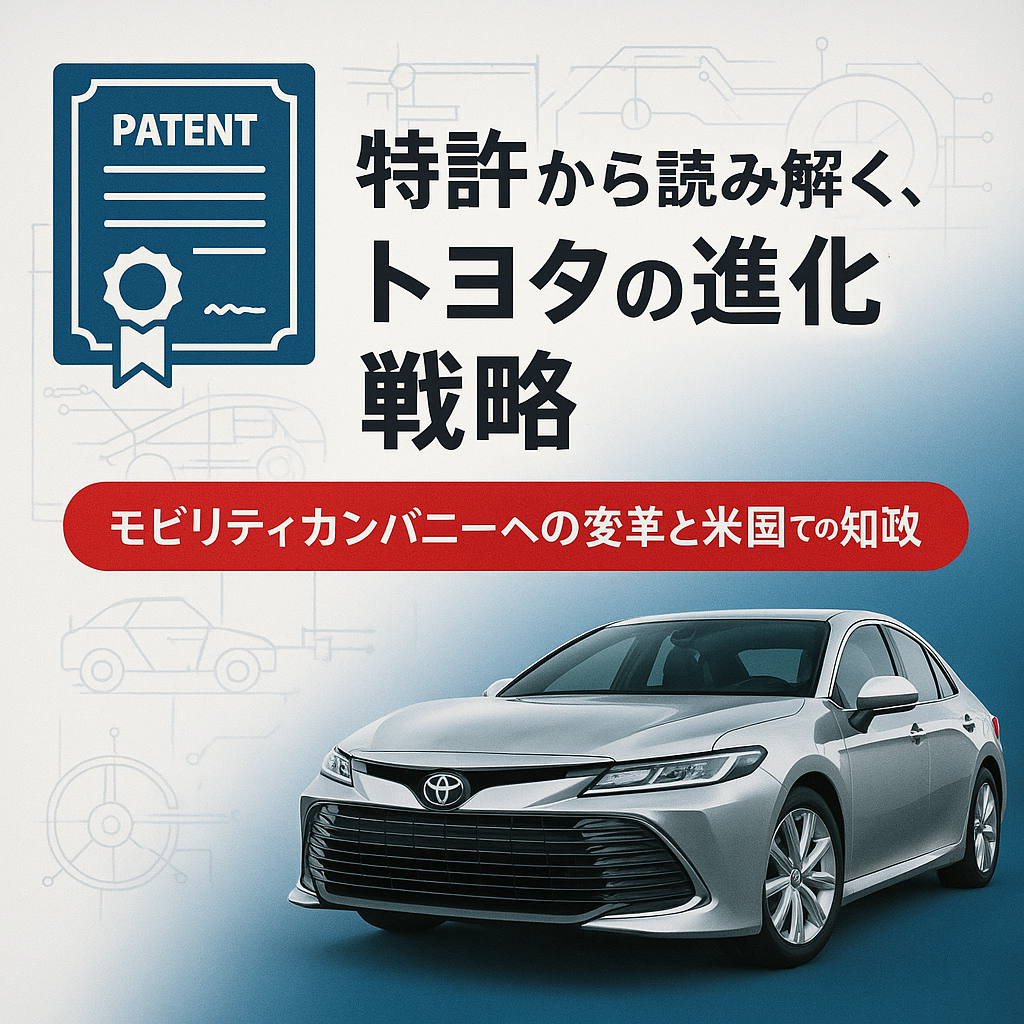In 2024, Toyota Motor Corporation obtained 2,428 patents in the United States. This marks the 11th consecutive year it has led all automakers in the number of patents acquired and places it among the top 10 across all industries. Beyond sheer numbers, the content of these patents is also of noteworthy value.
The Evolution into a Mobility Company
Toyota is undergoing a transformation from a traditional “automaker” into a “mobility company.” This shift extends its focus beyond manufacturing vehicles to encompass all technologies related to mobility—such as electrification, autonomous driving, energy management, and communication infrastructure. The latest batch of patents serves as compelling evidence of this strategic direction.
Toyota’s Future as Seen Through Its Patents
One example is Toyota’s development of a unique black pigment that enables LIDAR systems—essential for autonomous driving—to detect low-visibility black objects. This material technology is so versatile that it could also be used in clothing and bags, demonstrating how Toyota’s IP extends beyond the traditional automotive category.
Additionally, patents related to EV power management—such as technologies that allow users to optimally charge or discharge at the right time, place, and amount—are highly compatible with renewable energy systems and hold the potential to play a key role in future smart grids.
Furthermore, V2V (vehicle-to-vehicle) and V2X (vehicle-to-everything) communication technologies, which connect vehicles with infrastructure and surrounding objects, are likely to serve as the foundation for a cooperative infrastructure in the autonomous driving society of the future.
IP Strategy and Talent Network in North America
Toyota’s strong commitment to acquiring intellectual property in the United States is driven not only by the importance of the North American market but also by its collaboration with R&D hubs. Centered around its research facilities in Michigan, Toyota works closely with group companies in Japan—such as Toyota Connected and Woven by Toyota—to build a global intellectual property ecosystem.
This represents more than just a “local development structure”—it reflects a globally coordinated approach to R&D and IP strategy.
Conclusion
The technologies that Toyota accumulates in the form of patents are not merely tools to block competitors. They embody a vision and philosophy for how the next-generation mobility society should be designed. Toyota’s transformation into a mobility company is not just about changing the form of its products—it is about reshaping the very infrastructure of society.

